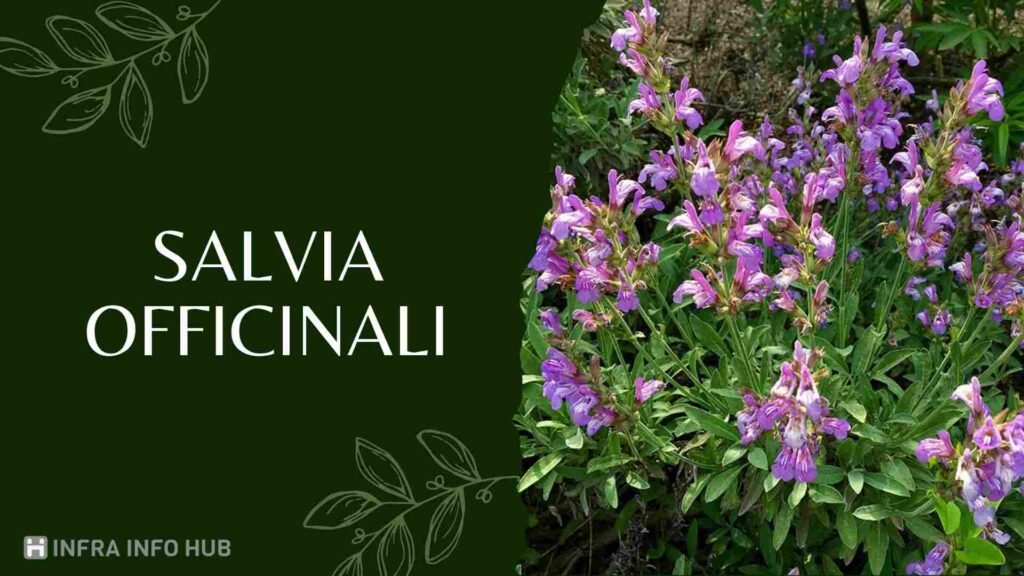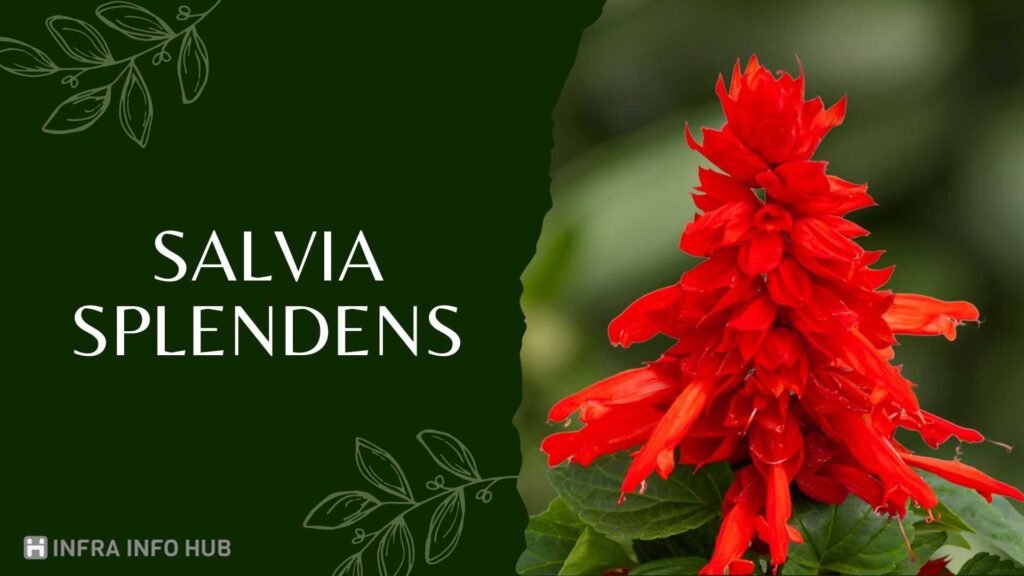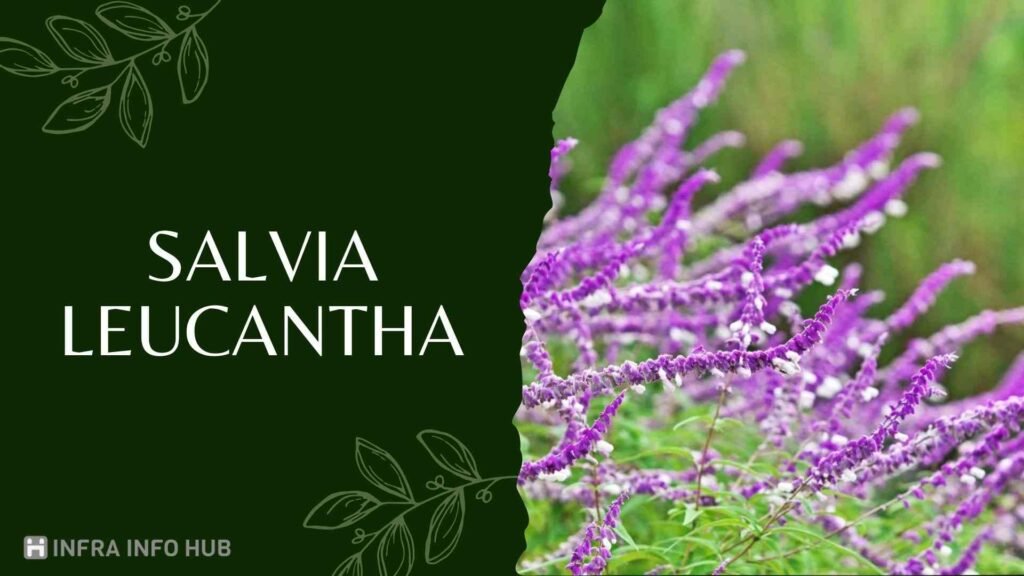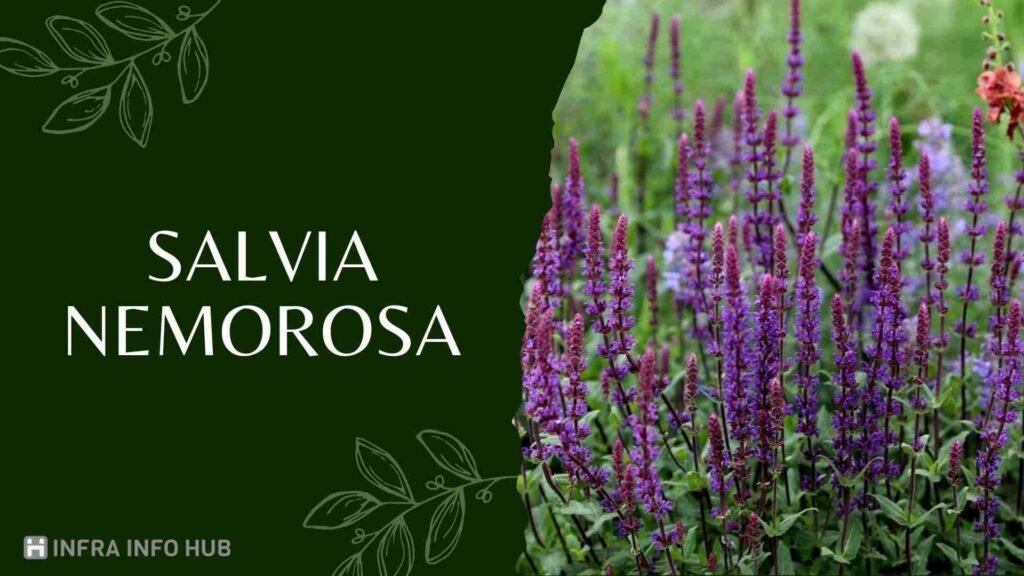Salvia is a large group of flowering plants that includes more than 900 different species. These plants are not only beautiful but also useful. They are known for their bright colors, pleasant smell, and healing properties. Salvia is used in gardens, traditional medicine, cooking, and even spiritual practices. In this article, we explore the different types of Salvia, its benefits, meanings, and how you can easily grow and care for it.
Table of Contents
- 1 What Is Salvia? A Simple Introduction
- 2 Popular Types of Salvia Flowers
- 3 Health Benefits of Salvia
- 4 How to Grow Salvia: Step-by-Step Guide
- 5 Trimming and Maintenance
- 6 Spiritual Meaning of Salvia
- 7 Why Salvia Is Good for the Environment
- 8 Easy DIY Uses for Salvia at Home
- 9 Creative Ways to Use Salvia in Gardens
- 10 Simple Salvia Care Checklist
- 11 Basic Plant Info
- 12 Final Thoughts: Why You Should Grow Salvia
What Is Salvia? A Simple Introduction
Salvia belongs to the mint family (Lamiaceae) and is known for its square stems, fragrant leaves, and tube-shaped flowers. The name “Salvia” comes from the Latin word salvere, which means “to heal.” This tells us a lot about how people have used this plant for centuries to treat different health problems.
Salvia grows all around the world—from the dry mountains of the Mediterranean to the humid forests of Central America and Asia. Some Salvia plants are small herbs, while others are big, woody shrubs. Because it’s so adaptable, Salvia is loved by gardeners and herbalists alike.
Popular Types of Salvia Flowers
1. Salvia Officinalis (Common Sage)

This is the same sage used in cooking. It has soft, grey-green leaves and purple flowers. It grows best in dry soil and full sun. Aside from flavoring food, it is also used for sore throats, memory support, and digestive health.
2. Salvia Splendens (Scarlet Sage)

Known for its bright red, pink, or purple flowers, this type is mainly used in gardens for its looks. It attracts birds and butterflies and grows well in warm climates with regular watering.
3. Salvia Leucantha (Mexican Bush Sage)

This Salvia has long, fuzzy flower spikes in white and purple. It blooms from late summer to early winter and is perfect for dry gardens. It also attracts many bees and butterflies.
4. Salvia Divinorum

This plant is special because it’s used in spiritual rituals by some cultures in Mexico. It grows in shady, moist places and has soft, pale violet flowers. It’s also known for having strong effects on the mind when used carefully.
5. Salvia Nemorosa (Woodland Sage)

This variety grows well in cooler places and is great for garden borders. It has purple or pink flowers and keeps blooming if you remove the old flowers regularly. It’s easy to grow and attracts pollinators like bees.
Health Benefits of Salvia
Salvia is more than just a pretty plant—it has real health benefits too. For example, Salvia officinalis (common sage) is good for your brain. Studies show it may help with memory and focus, especially in older adults. It is also known to reduce inflammation, which can help with joint pain, skin issues, and sore throats.
Women going through menopause often use Salvia to reduce hot flashes and night sweats. When made into a tea, Salvia can help with digestion and calm your nerves. It also has antibacterial properties that help fight germs in the mouth and body.
How to Grow Salvia: Step-by-Step Guide
1. Best Soil
Salvia grows well in light, well-draining soil. It doesn’t like soggy roots. You can mix in sand or compost to make the soil better. The ideal soil pH is between 6.0 and 7.5.
2. Sunlight
Most types of Salvia love full sun, at least 6 to 8 hours a day. Some kinds can grow in partial shade, but they may not bloom as much.
3. Watering
Water regularly when the plant is young. Once it’s grown, you can water less often. Overwatering can harm the roots. Water at the base of the plant to avoid wetting the leaves.
4. How to Multiply
You can grow Salvia from seeds, cuttings, or by dividing older plants. Seeds can be started indoors or directly in the garden. Cuttings can be placed in moist soil until they grow roots. Older plants can be split in spring or fall.
5. Feeding
Salvia doesn’t need a lot of fertilizer. A monthly dose of a balanced plant food during the growing season is enough. Too much nitrogen can cause more leaves and fewer flowers.
Trimming and Maintenance
To keep Salvia looking neat and blooming for longer, remove faded flowers (a process called deadheading). Cut back perennial varieties in late winter or early spring to help new growth. Watch out for pests like aphids or spider mites. Neem oil or soap spray can help control them without harming the plant.
Spiritual Meaning of Salvia
Salvia has strong cultural and spiritual meanings. In ancient Greece and Rome, it was considered a sacred plant that stood for wisdom and protection. In Native American traditions, especially among the tribes of the Southwest, white sage (Salvia apiana) is burned during “smudging” to clean spaces of negative energy. Today, people still use Salvia in meditation, healing rituals, and energy work. It represents purity, transformation, and clarity.
Why Salvia Is Good for the Environment
Salvia flowers are full of nectar, which attracts bees, butterflies, and hummingbirds. These pollinators are very important for gardens and farms. By planting Salvia, you support the health of the local ecosystem.
Salvia also helps in other ways. Its strong smell keeps pests away from nearby plants. It can be used as a natural barrier in vegetable gardens. Some types have deep roots that hold the soil together and prevent erosion.
Easy DIY Uses for Salvia at Home
| Use | How to Do It | Benefits |
|---|---|---|
| Salvia Tea | Steep dried or fresh leaves in hot water for 10 minutes | Aids digestion, calms nerves |
| Scent Bags | Fill cloth pouches with dried leaves and lavender | Natural air freshener and bug repellent |
| Herbal Oil | Soak leaves in olive oil for 2–3 weeks | Good for massages and skin |
| Smudge Sticks | Dry stems and tie them into bundles | Used for spiritual cleansing |
Creative Ways to Use Salvia in Gardens
- Garden Borders: Salvia looks great next to flowers like lavender, coreopsis, and coneflowers.
- Rock Gardens: Smaller types of Salvia add color without needing much water.
- Pollinator Gardens: Combine Salvia with bee balm and milkweed to attract butterflies and bees.
- Herb Gardens: Grow it with rosemary, thyme, and basil for a fresh and useful mix.
Simple Salvia Care Checklist
| Task | How Often |
|---|---|
| Watering | Weekly or when dry |
| Fertilizing | Once a month |
| Trimming | As needed and once a year |
| Pest Check | Every 2 weeks |
| Mulching | Once per year |
Basic Plant Info
- Kingdom: Plants
- Family: Mint family (Lamiaceae)
- Genus: Salvia
Final Thoughts: Why You Should Grow Salvia
Salvia is a truly special plant. It brings beauty, healing, and spiritual peace into your space. It’s easy to grow, good for the environment, and full of history and meaning. Whether you plant it to brighten your garden, support pollinators, or enjoy its calming tea, Salvia is a gift from nature that gives back in many ways. Add it to your garden, and you’ll quickly see why it has been valued for centuries.










